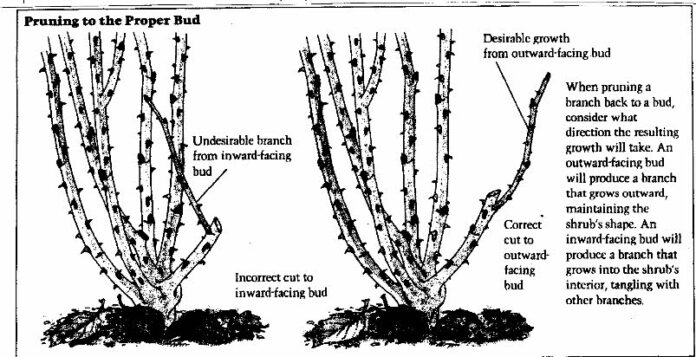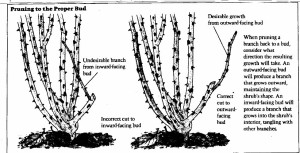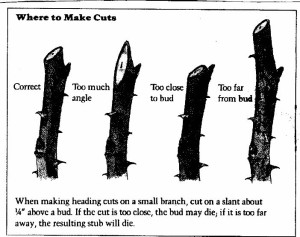March Horticultural Tasks
By Amy Wright
I want to give everyone a fair warning for this coming growing season. Last year we had a very usually wet summer. Whenever there are extended periods of wet like we had last year, you can expect insect populations to peak the following year. Before you go out and buy insecticide, I encourage you to scout your plants regularly. It’s important to properly identify any insect before taking action. The beneficial insects are out there, too. One way you can predict Japanese beetles, is to go take a look under your soil now. If you turn the dirt over and find a lot of grubs, you need to plan to treat for them in March or April. Once they’ve become adult beetles, control is difficult to impossible. I always encourage preventative action first for pests and diseases. When control is needed, use the least invasive chemical action as possible. If you can remove aphids with a strong spray of water, then that is better than using a chemical. Soaps are also a great control of many insects. Proper identity of a pest may keep you from spending money. The life cycles of insects vary, and by the time you even notice damage, it may be too late to control with a pesticide. If you didn’t pull out last year’s mulch and replace it, I strongly urge you to do it now. Many insects winter over in your mulch. Removing it will help deter those insects from reproducing.
Annuals
The average last frost date is Columbia is March 26th, which means spring is just around the corner. March’s blustery winds can dry out winter annuals, so be sure to keep them well watered. It’s too early to plant warm season annuals, but planting beds can now be prepared:
- Mix in compost.
- Determine sun and shade conditions. There’s big difference to your plants between morning sun and afternoon sun. If your bed receives afternoon shade, then plant shade-loving plants.
Measure the size of your bed. Length multiplied by width will give you the total square footage of your bed. Use this figure to calculate how many plants to buy based on spacing guidelines on plant tags. Save money by not buying too many plants.
Turf
- Pre-Emergent Herbicide and Fertilizer
- o Warm season grasses such as Centipede, Bermuda, Zoysia, and St. Augustine need to have a pre-emergent herbicide applied when the Forsythia (Yellow Bells) shrubs are blooming. This is a better indication than a date on the calendar.
- o Avoid purchasing combination “weed and feed products” offered in many big box retail stores. They are purchased by the store for the entire nation, and are inappropriate for our warm season grasses.
- o Do not fertilize warm season grasses until they come out of dormancy or “green up”, which will likely be in April.
- o If you wait until April to apply pre-emergent herbicide, it will be too late to prevent weeds in your lawn.
- o To determine how much herbicide to buy, measure the length of the yard and multiply by the width: This will give you the square footage. Generally, a bag covers 2,500 to 5,000 square feet.
- Fire Ants
- o Late March through April are great times to treat fire ants. Fire ants will burrow down deep when the weather is cold or hot, but will be very active in spring and fall.
- o One of the best products on the market is “Over & Out”. It takes about six weeks to completely remove the ants, but control can last for up to three years because it kills the queen. Well worth the wait!
Perennials
Overcrowded perennials can be divided now. Monitor for aphids on daylilies and other perennials.
Roses
Keep your newly planted roses watered and fertilized. As a general rule, you should avoid getting the leaves wet to prevent the leaf spot that many roses are prone to getting. Roses should be pruned way back during February and March. Remove dead canes and any canes that are growing toward the center of the plant. Remove leaf debris from the crown of the plant and any mulch that may have piled up over the crown. Using sharp, clean pruners and loppers, look for an outward facing bud to make your cut just above.
Aphids love the new growth on roses. Monitor closely. Most roses can tolerate aphids with little detrimental effect, and lady bugs will swiftly move in to help control the aphid population. Proper pruning allows for good air circulation and will help minimize any sooty mold resulting from aphid honey dew. If you want to plant a rose that seems resistant to leaf spot, try the ‘Knockout’ roses and Earth-Kind rose. You’ll also want to try the ‘Home Run’ Rose and Drift Roses. Like a fabulous pink rose? Try the ‘Belinda’s Dream’ Rose. This rose can be seen on Gervais Street in medians throughout the Vista area. Developed in Texas, this rose has impressed me with its drought and heat tolerance and the oversized blooms in contrast to its compact size. This rose hasn’t needed any pruning to control its size. The foliage has a bluish tint that contrasts so beautifully with its pink flowers. If you like to shop locally for roses, I can recommend Roses Unlimited in Gray Court, SC. They have a great website to order from.
Shrubs
There’s much confusion about pruning shrubs. As general rule, if the shrub blooms in the spring do not prune it until it has finished blooming. Otherwise, prior to spring growth is a good time to cut back shrubs to encourage new growth. If you just want to maintain the shape of a hedge, clip off the lighter green growth when it emerges in the spring. Monitor shrubs for insects. After Valentine’s Day and when they’ve finished blooming is a good time to prune camellias. Remove dead or crossing branches. Do not remove more than 1/3 of the height of the shrub in a single year. Camellias are susceptible to scale. Monitor the undersides of leaves for white spots that may indicate scale.
Trees
March is still a good time to plant trees through the end of the month. Check for damaged, dead, or crossing branches in trees and remove just outside the bark branch ridge of the limb.







